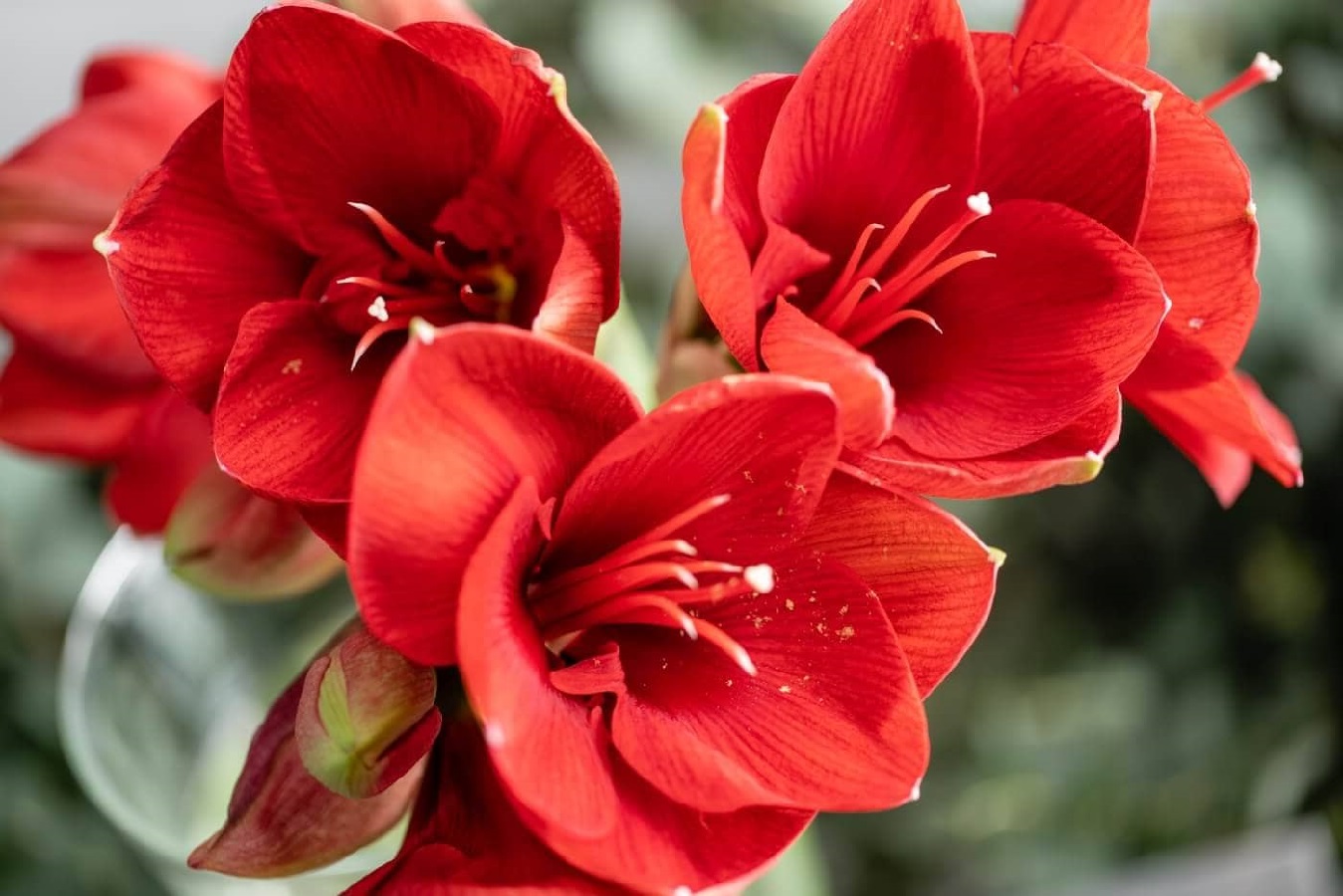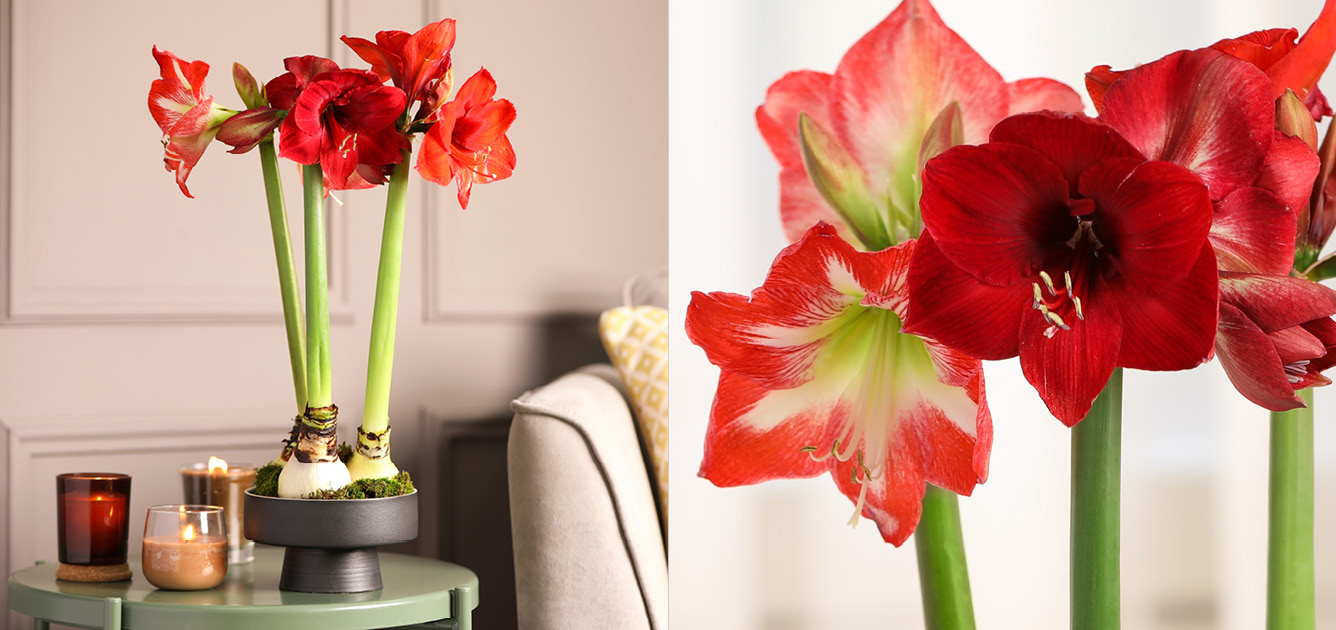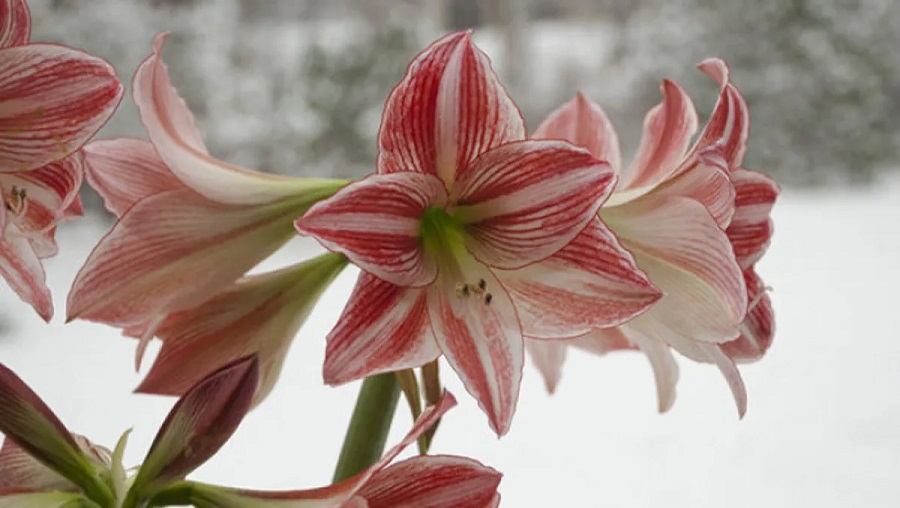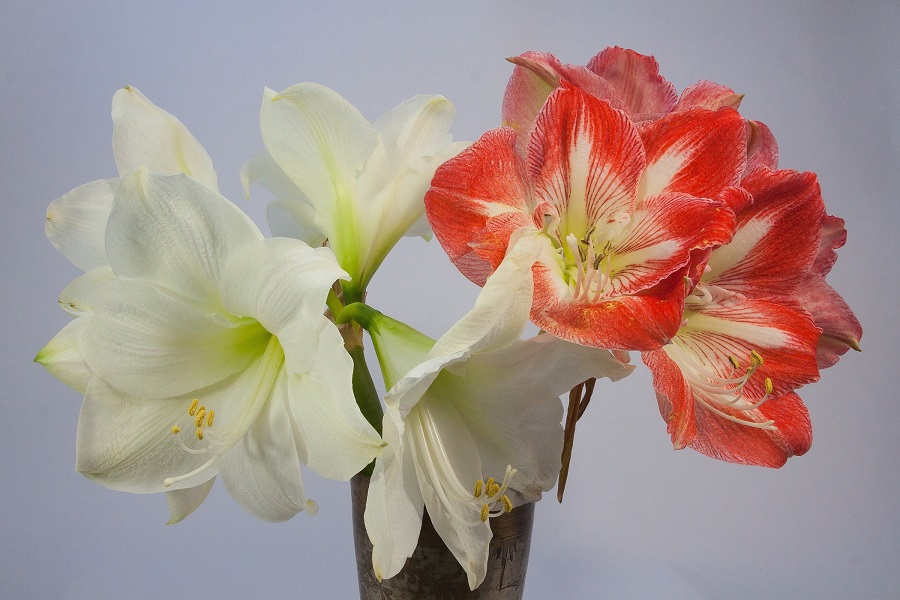How to Care for Amaryllis? Potted Amaryllis Care Guide
Amaryllis is a very popular ornamental potted plant. It can be found in many households, although taking care of it might be a demanding task. However, if you follow the advice of experts, you can make this plant a real decoration of the interior. Check the needs of the amaryllis plant and learn how to care for it so that it grows beautifully.

Amaryllis - what kind of plant is it?
Amaryllis is sometimes referred to as Hippeastrum. If you look into details, though, you might discover these two plants are a bit different. The true amaryllis is typically planted outside, while hippeastrums are kept indoors. Nonetheless, the plants are colloquially called amaryllis, because of their similar looks.
Hippeastrum originates in South America, although it’s popular everywhere - especially in Europe. It amazes with its beautiful flowers. This plant needs special conditions for a proper growth.

Amaryllis - the most popular varieties
There are many varieties of amaryllis. They are classified primarily according to the colors of their flowers. They are typically red, although there are also orange, white, pink or even double-colored amaryllis varieties.
Potted amaryllises also differ by the looks and the sizes of their flowers. There are several most popular varieties:
- Butterfly,
- Colibri,
- Diamond,
- Galaxy,
- Spider,
- Trumpet.

Amaryllis care - what does the plant need?
Amaryllis likes growing in bright spots, but it should never be exposed to direct sunlight. It means that instead of a windowsill, it’s better to place this plant e.g. next to the balcony door, where the curtains block the sun and disperse the rays.
The soil for amaryllis should be fertile and permeable. When preparing the container, put small pebbles at the bottom for drainage. The pot should be large enough - of a diameter no smaller than 20 cm.

Amaryllis - care and watering
The right temperature is the basic concern when taking care of an amaryllis. A room temperature of 17-20ºC (62.6-68ºF) is perfect for the whole year. As suggested by experts, you should move the amaryllis to a colder room of 15-16ºC (59-60.8ºF) at the end of August, when the plant begins so-called dormancy - the resting period.
A potted amaryllis dislikes frequent watering. Keep that in mind to prevent rot. Once a month, you can add a special fertilizer to the water - especially during blooming period. It strengthens the plant and positively affects the colors of the flowers.

A potted amaryllis - does it need trimming?
The leaves are an important part of an amaryllis, remove them under no circumstances. They are the plant’s natural reinforcement. But you should cut the flowers after they stop blooming. Removing them prevents the amaryllis plant from producing seeds and strengthens it before the next vegetation period.
What do you do with amaryllis bulbs after they bloom?
An amaryllis needs special treatment after blooming. Thanks to certain steps, the plant is allowed to regenerate before entering the next growth phase and blooming again.
- As the first step, stop watering your amaryllis - we recommend doing it in August.
- Move the container with the plant to a colder room - at least for 2 months.
- Next, dig up the bulb out of the container.
- Remove any remains of leaves and dead roots.
- As the last step, plant the amaryllis in new soil.
Make sure to feed the plant after you plant it anew. Don’t do it too frequently, though. Once in a month is just enough.

Amaryllis care indoors - common diseases and pests
Fungal diseases are the biggest threat for an amaryllis plant. They might appear along with high humidity in the container. This is the reason why you should water this plant moderately.
Certain pests - thrips - often appear in pots with amaryllises. After noticing the problem, use the right chemical product - you can purchase it in any gardening store.

📍 When to stop watering an amaryllis?
One should stop watering an amaryllis plant in August. Thanks to this, you can prepare the plant for further procedures and the bulb's dormancy period.
📍 How long does the amaryllis bloom?
Amaryllis typically flowers in August and blooms for about a month. It stops blooming in September. That's when you can begin preparing the plant for further elements.
📍 How to care for amaryllis to make it bloom?
Placing the bulb in new soil every year is the basic element of taking care of an amaryllis. After planting the bulb, begin feeding the plant. Make sure the temperature is right, and don't overwater the soil.
📍 When to cut amaryllis leaves?
You shouldn't cut the leaves of an amaryllis. They naturally strengthen the plant. Many people mistake trimming an amaryllis for removing its leaves - while you should just cut the flowers after they stop blooming.
Featured articles




